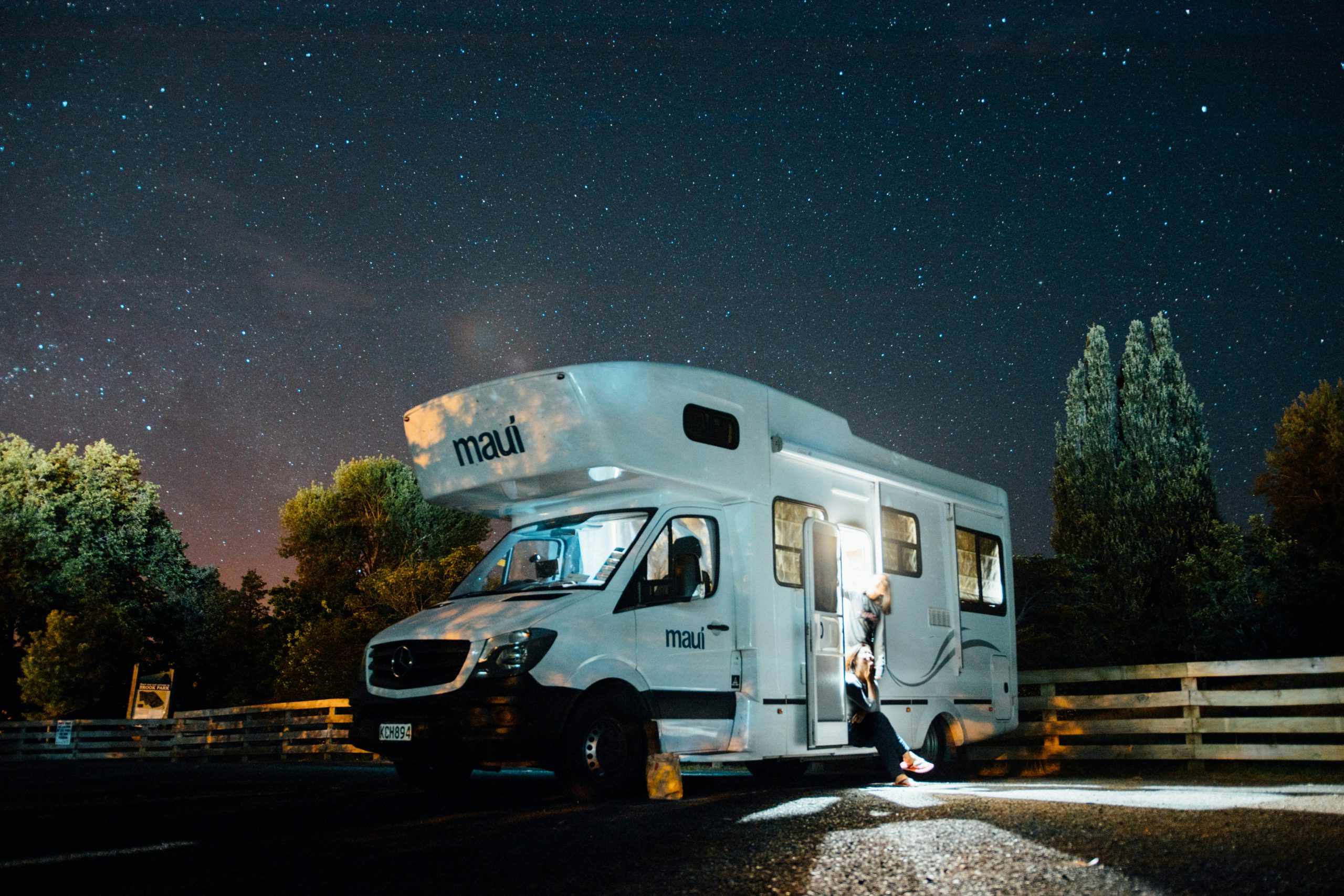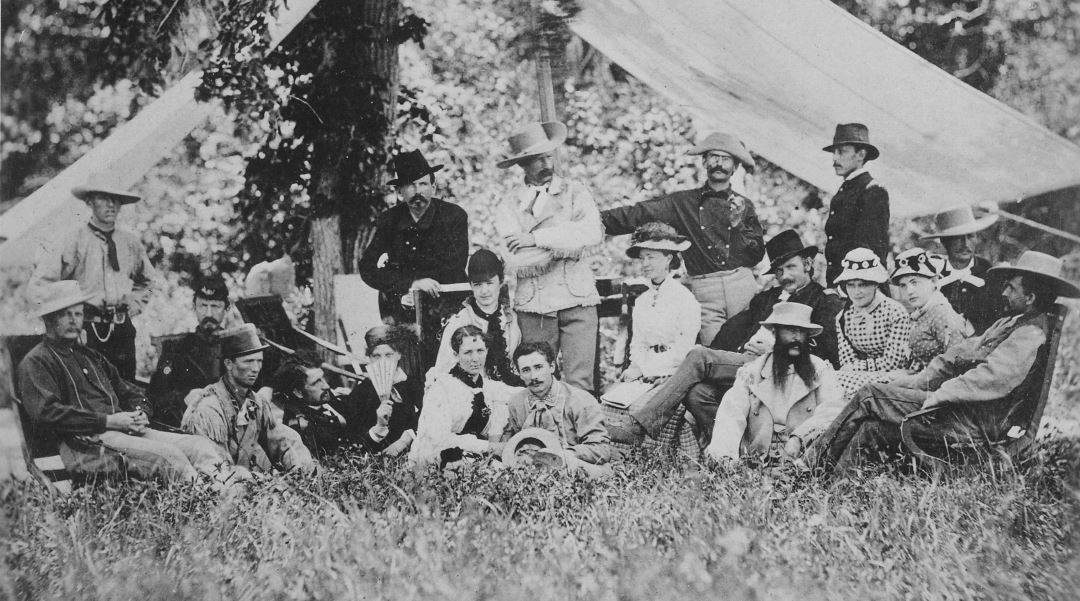Camping in the U.S. comes with a whole host of traditions. Most of us immediately think of a fire pit, a tent, roasting marshmallows, and the like. While not everyone camps in the same way, these cultural touchstones are part of our collective imagination. But where did they come from and how did they get so popular as to become iconic?
A short history of camping
Camping is perhaps as old as mankind. It is simply how any nomadic or semi-nomadic people live and there are still many people around the world for whom camping is still a daily way of life.
The traditional trappings of shelter, fire, and preparing food are simply extensions of the basic survival needs we all share.
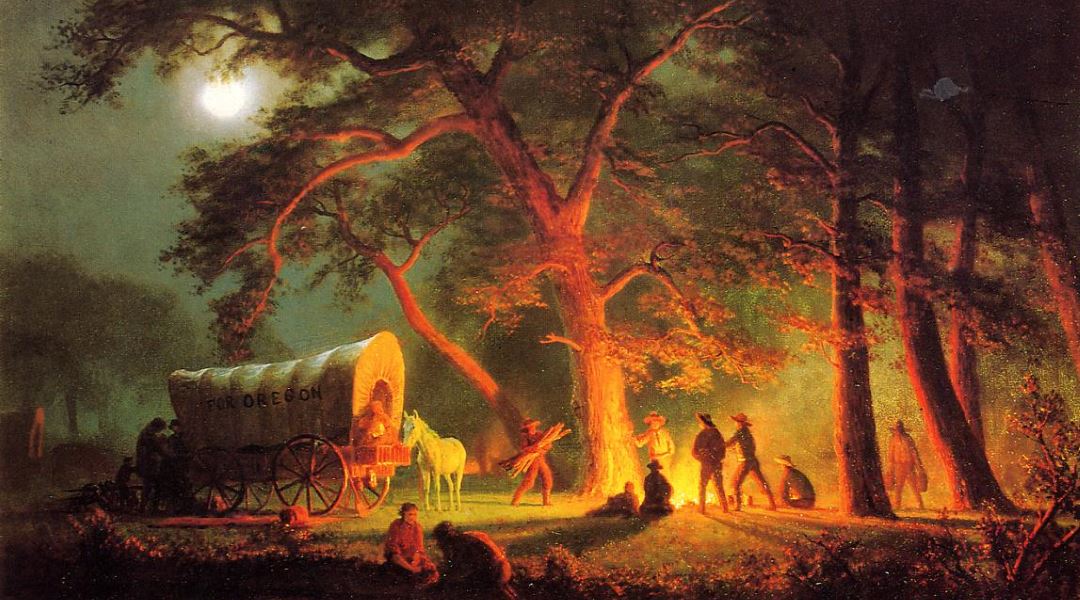
American camping, as a past time, has its roots in the turn of the 20th century. The nation was deep into the industrial revolution and becoming ever more urban in its population and culture. Many people developed a strong yearning to re-connect with nature. At the same time, national parks were being established throughout the western states and roads were springing up everywhere to accommodate the flood of cheap automobiles Henry Ford was churning out. Motive and means were both at hand and camping became a national passion.
This period saw the birth of both youth summer camps and youth scouting organizations, both under the notion that what modern children needed was 1) to re-connect with nature and 2) a simpler way of living. Many of the traditions we associate with camping were born in these organizations.
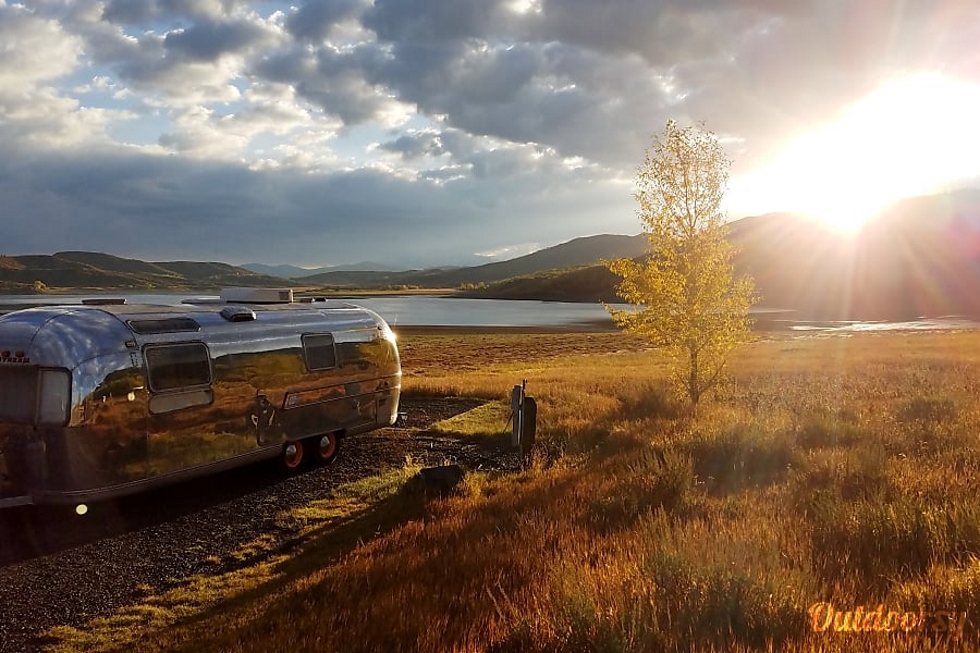
Marshmallows and S’mores
Cheap marshmallows became available and popular right around the time that camping was on the rise. Kids love sweets, so its inevitable the two would meet—and among the candies and confections kids love, not many lent themselves to roasting over a fire on a stick. It wasn’t long before kids figured this out, and the joy of roasting marshmallows was born. Because scouting organizations were national, ideas spread quickly from one camp or troop to the next and, before long, making S’mores was a nationwide phenomenon.
While the boys were playing with their marshmallows and sticks, it was the girl scouts that seemed to have hit upon the idea to combine roasted mellows with graham crackers and chocolate bars. The first known publication of such a recipe was in 1927 in a book titled, “Tramping and Trailing With the Girl Scouts”—you can see it here. The recipe was titled, “Some Mores.” The name may have been inspired by Mallomars and Moonpies, both chocolate-covered marshmallows on cookies, first introduced a just a decade earlier.
The fact that the recipe has lasted for nearly 100 years and remains the reigning king of campfire deserts is truly remarkable. Of course, there are many new twists on the old recipe.
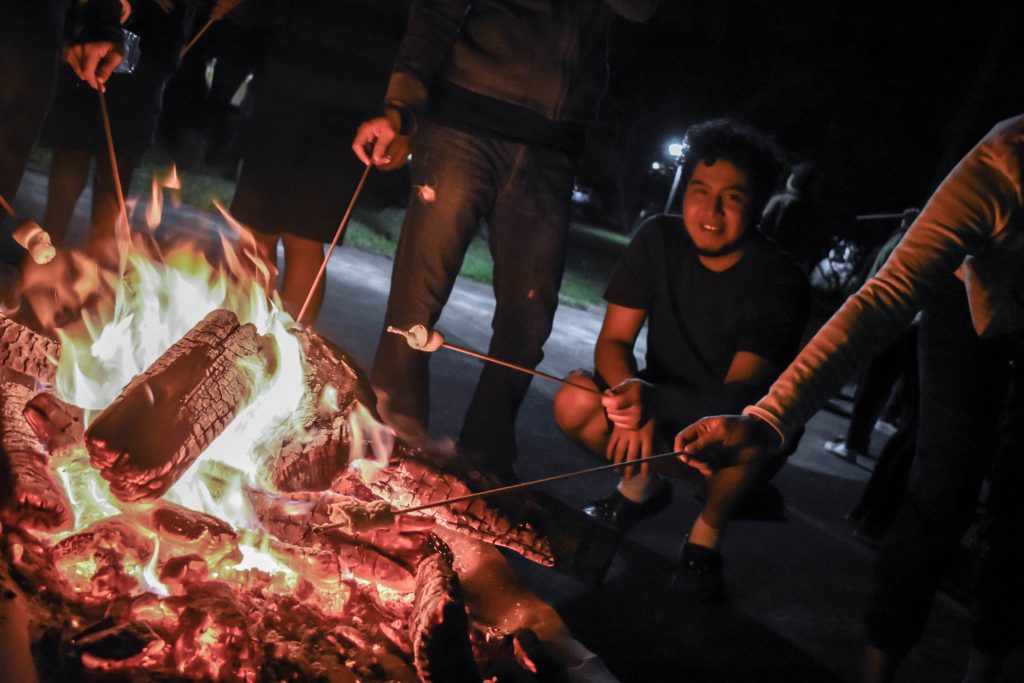
Campfire sing-alongs
Music and singing have been a source of mutual entertainment for nearly every human culture in all recorded history. Since it requires nothing more than the human voice, it’s readily available entertainment when camping. But there are some specific cultural roots and meanings to the American campfire sing-along. And like most of these, their roots are in the early 1900s, specifically from youth summer camps.
Among the virtues that summer camps were supposed to teach kids was solidarity. To encourage solidarity, children were encouraged to all participate in sing-along events. It built a sense of community and togetherness through shared experience. Since there were many more things to do in the daytime, signing around the campfire in the evening just made good sense—after all, you don’t need to see to sing.
The songs themselves tend to originate from three sources. The first pillar are gospel singing traditions, often rooted in black churches or old-time camp revivals of the second great awakening. The second pillar are military marching songs. Camp leaders often had military backgrounds and brought those traditions with them to camp. And for the third, you have folk songs and melodies. Since these survived through the ages by oral tradition, they are almost always easy to remember and perform, perfect for camp.
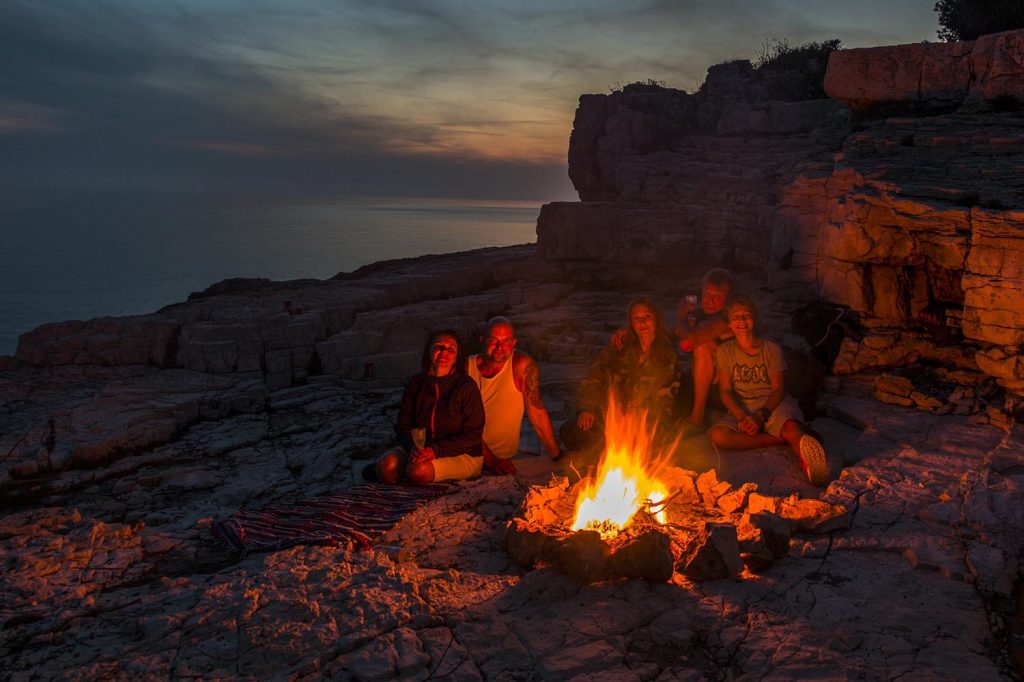
Ghost stories
A tradition that pre-dates American camping traditions, one that can be found all over the world, is ghost stories. When it’s dark, and there isn’t much to do, telling stories is a natural choice for entertainment. And when it’s dark, and you are in an unfamiliar place, it’s the perfect setting to unnerve your fellow travelers with a tale of horror and mystery.
If anything, Americans tend to lag behind many other cultures in actively practicing the art of storytelling as a form of entertainment. We wholeheartedly embraced the move to TV and movies as our cultural storytelling mainstays. Still, despite not being practiced as much as it is portrayed, when you can find yourself a good ghost storyteller, it’s a wonderful thing.
If you want to try your hand at it, start by researching ghost stories of the area or region you are traveling to. You want a story that is fairly simple yet includes enough narrative to last for 3 to 10 minutes. Learn the story, and practice telling it to yourself. Imagine the story unfolding in your mind as you tell it or read it. (Your goal isn’t to memorize every word but to internalize that visual narrative.) Then, when you tell the story, you can pretty much just describe the action from your imagination. At that point, you can start to tweak the story to your liking or add in elements that will resonate with the audience.
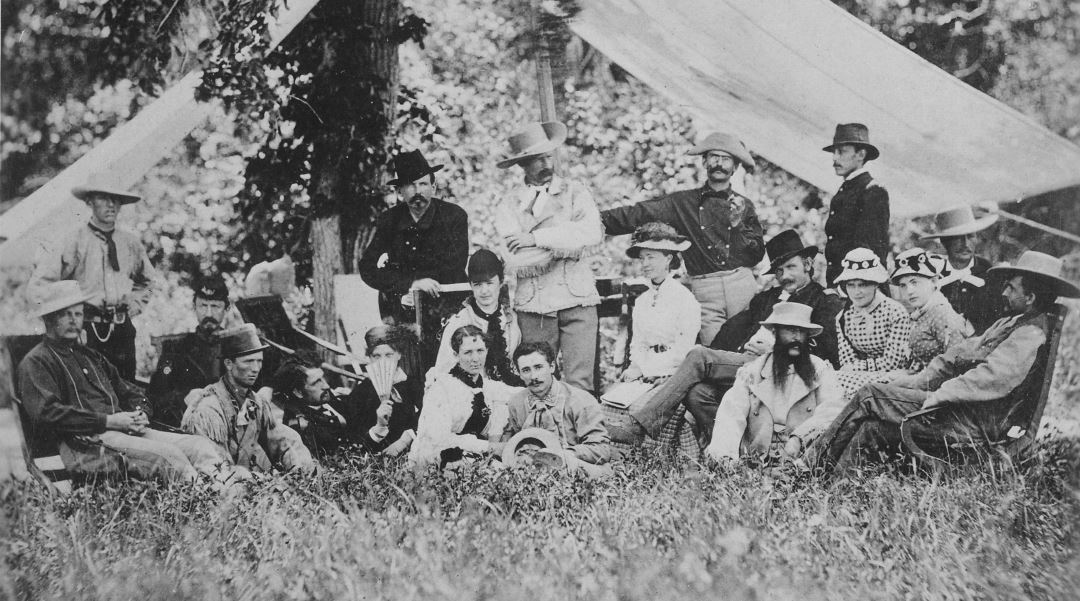 Ready to start your own camping traditions? Then it’s time to rent an RV on Outdoorsy and make some memories that will inspire future generations of campers.
Ready to start your own camping traditions? Then it’s time to rent an RV on Outdoorsy and make some memories that will inspire future generations of campers.

